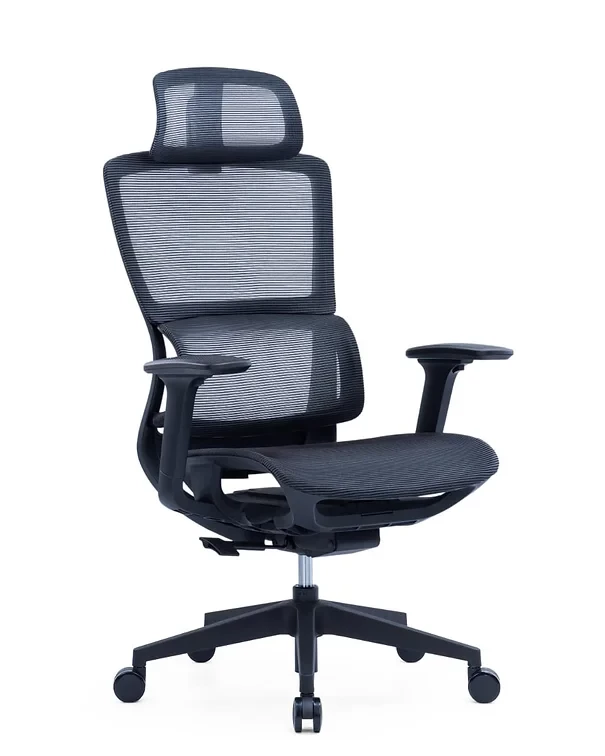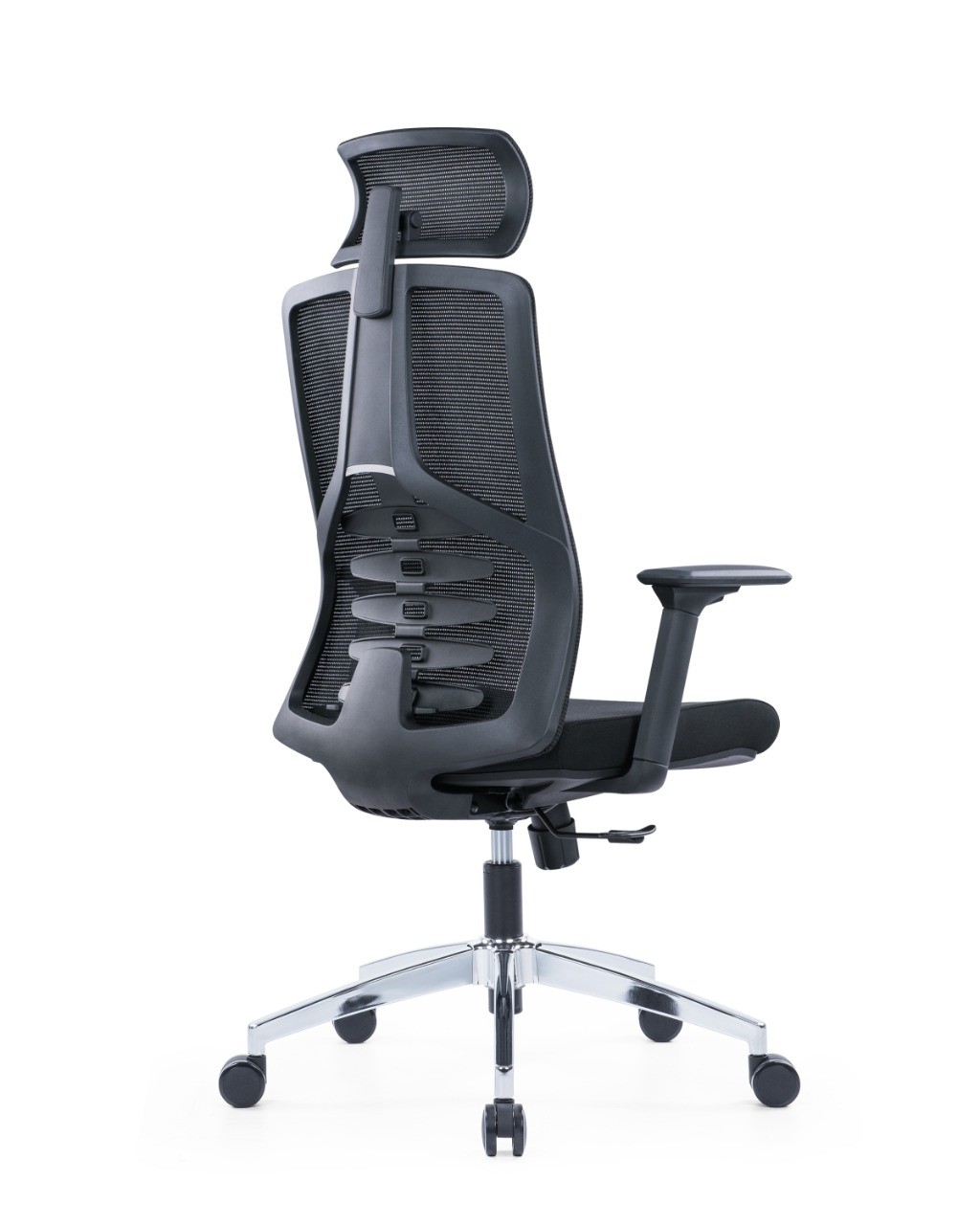
How to Select an Office Chair That Reduces Pressure on the Spine
Introduction
Back pain is one of the most common complaints among office workers, often caused by poor seating that places pressure on the spine. A well-designed ergonomic office chair can significantly reduce that discomfort by providing support in the right areas and encouraging better posture. Whether you’re working long hours at a desk or taking frequent meetings, choosing the right chair can make a major difference to your spinal health. This guide will walk you through the most important factors to consider when selecting a chair that prioritizes spinal comfort.
1. Proper Lumbar Support
Lumbar support is crucial in preventing lower back strain. A good chair should have either an adjustable lumbar pad or built-in contouring that follows the natural curve of your spine. This helps reduce slouching and keeps the lower back aligned.
2. Seat Depth and Width
A seat that's too deep can cause you to slouch; one that's too shallow may not provide enough thigh support. Choose a chair that allows your back to rest against the backrest while leaving a small gap between the seat edge and the back of your knees.
3. Adjustable Seat Height
Proper spinal alignment starts with your feet flat on the floor and your knees at a 90-degree angle. A chair with a smooth, pneumatic height adjustment feature makes it easier to find your ideal position.
4. Supportive Backrest Design
Look for a chair with a high backrest that contours naturally to the spine. A good backrest supports the entire back and encourages an upright posture, especially during extended periods of typing or screen time.
5. Ergonomic Recline Function
The ability to recline slightly while working or taking a break helps relieve pressure on the discs in your spine. A tilt mechanism that allows for smooth movement and controlled tension adjustment is key.
6. Cushioned and Contoured Seat Base
A firm yet comfortable seat base ensures pressure is distributed evenly across your hips and thighs, preventing excessive stress on the lower back. Avoid overly soft cushions that may encourage poor posture.
7. Adjustable Armrests
When armrests are positioned correctly, they help support the shoulders and upper back, reducing tension that can pull on the spine. Choose chairs with height- and width-adjustable armrests that move with your body.
8. Stable Chair Base and Mobility
A sturdy five-star base with smooth-rolling casters helps you move easily and maintain posture throughout the day. This stability also prevents twisting motions that can strain the spine.
9. Breathable Upholstery
Overheating can increase discomfort and tension in the back muscles. Chairs with breathable mesh or well-ventilated padding offer cooling comfort, especially during long work hours.
10. Headrest for Full Spinal Support
For those with extended computer use or frequent calls, a headrest can help align the upper spine and reduce neck strain. Look for models with adjustable headrests that follow your natural posture.
Additional Considerations When Choosing a Spine-Friendly Chair
11. Daily Usage Duration
The longer you sit, the more important it becomes to have a chair with full ergonomic adjustability. Evaluate how many hours you work daily and select a chair accordingly.
12. Weight Capacity and Build Quality
A strong, durable frame ensures the chair remains supportive over time. Check weight limits and materials to ensure the structure won't sag or tilt unevenly with use.
13. Smooth Recline Lock
Some chairs offer a recline lock to hold the backrest at a specific angle. This feature can help maintain a neutral spinal position while typing, reading, or relaxing.
14. Minimal Pressure Points
The seat and backrest should not press too firmly against any part of your body. Check for pressure distribution across the back and thighs, as uneven support can create long-term discomfort.
15. Compact Yet Supportive Design
If space is limited, seek a chair that doesn’t take up too much room but still offers all the key spinal support features. Many compact designs still provide full ergonomic benefits.
16. Visual Ergonomics
Chairs with subtle curves and clean finishes not only feel supportive but also help create a workspace that feels calming and organized, aiding overall wellness.
17. Ease of Adjustments
You shouldn't have to struggle with knobs or levers. Choose chairs that allow quick and smooth adjustments so you can maintain good posture effortlessly.
18. Arm Position Relative to Desk
Make sure the armrests can move in tandem with your desk height. This reduces shoulder strain and avoids tension traveling down the spine.
19. Trial or Return Policy
If possible, select from vendors who offer a return or exchange policy. Sitting in a chair for a few days is the best way to know if it really reduces spinal pressure.
20. Certified Ergonomic Design
Look for chairs certified by recognized ergonomic or occupational health organizations. These certifications often reflect thoughtful engineering aimed at protecting spinal health.
Recommended Products

-
Chablo Executive High Back Ergonomic Office Chair – Black
This high-back chair offers excellent lumbar support, a contoured shape, and padded comfort, making it a smart option for reducing lower back strain.
-
Sitma Black Ergonomic Executive Chair
With its supportive seat cushion, adjustable features, and modern design, the Sitma chair helps promote upright posture and spinal alignment throughout the day.
Final Thoughts
Selecting an office chair that reduces pressure on the spine is more than a comfort decision—it’s a long-term investment in your health. The right chair should support your posture, reduce muscular fatigue, and help you stay focused without discomfort. Features like lumbar support, ergonomic design, and adjustability aren’t just extras—they’re essentials. By choosing wisely, you ensure that your workspace supports your well-being just as much as your productivity.
FAQ
Is lumbar support really necessary in an office chair?
Yes, lumbar support helps maintain the spine’s natural curve and reduces strain on the lower back muscles and discs.Should the chair recline if I’m trying to protect my spine?
A slight recline reduces disc pressure and helps improve circulation. Just ensure it offers support in all positions.What seat depth is best for spinal comfort?
A seat should allow you to sit fully back with 2–3 fingers’ width between the seat edge and your knees for best support.Can armrests really impact spinal pressure?
Yes, improper arm support can lead to shoulder tension that eventually affects the upper and lower spine.


